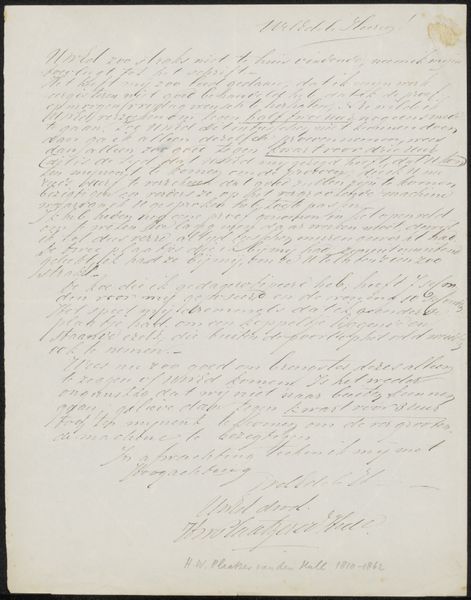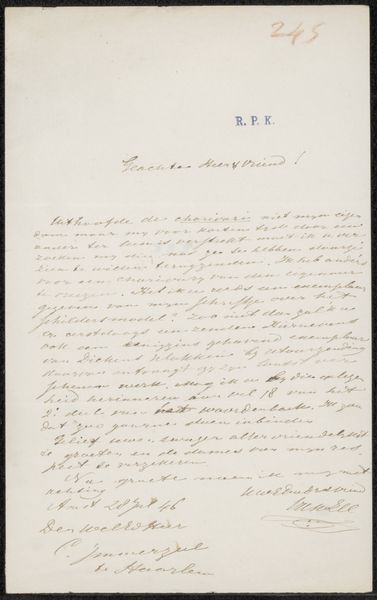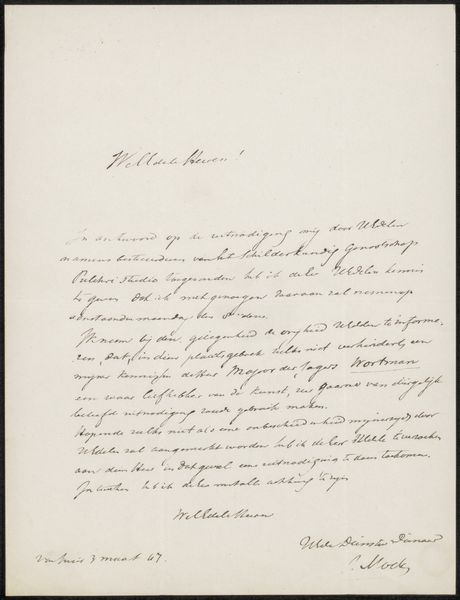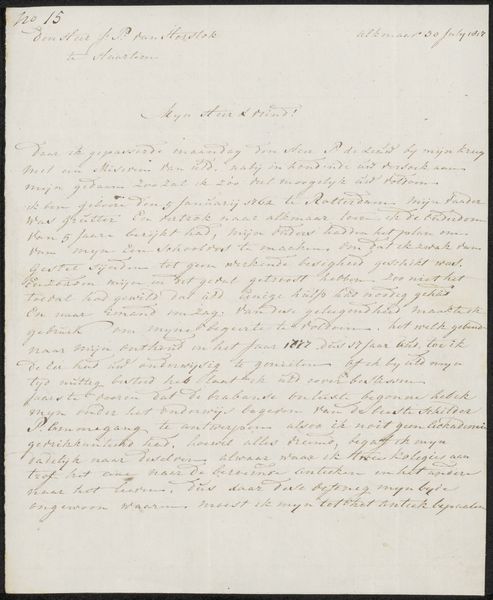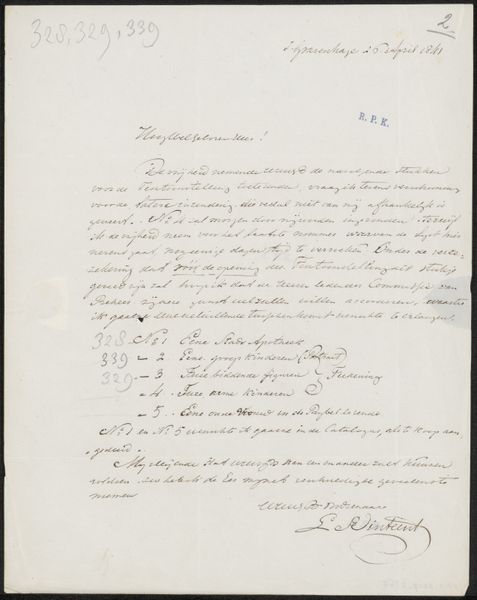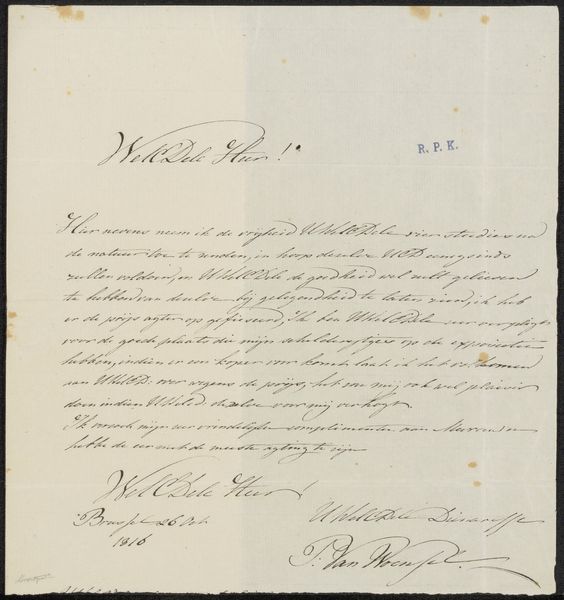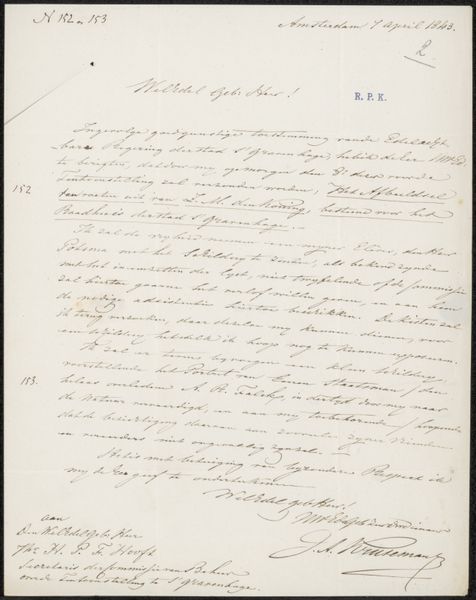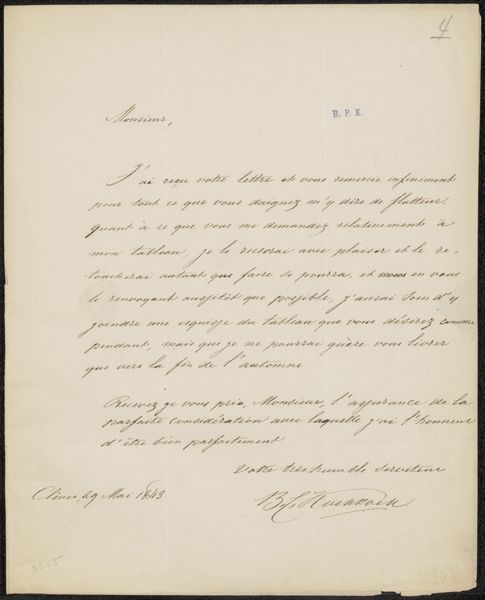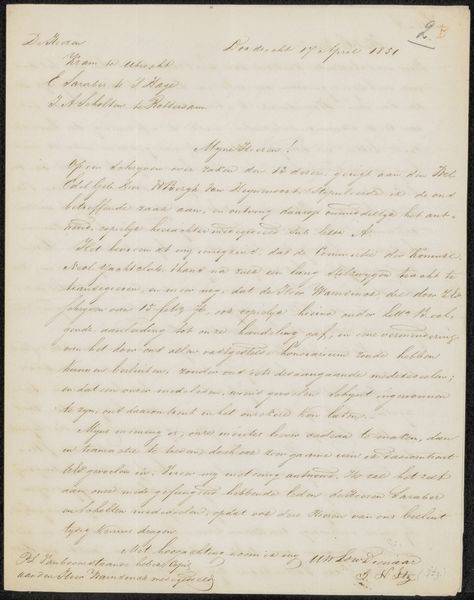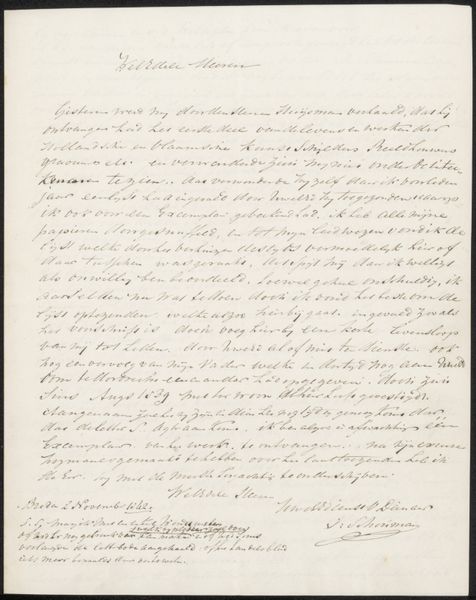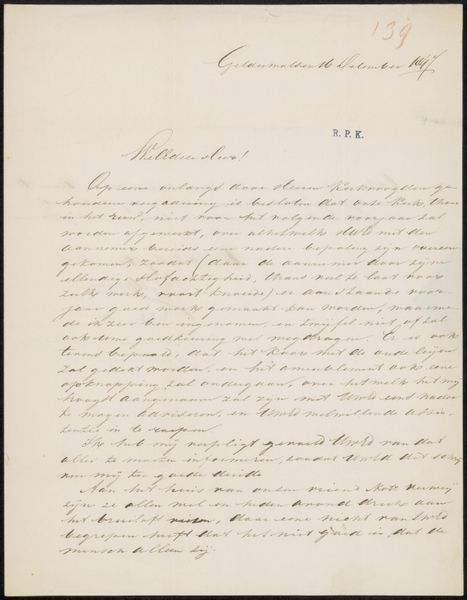
drawing, paper, ink, pen
#
portrait
#
drawing
#
paper
#
ink
#
pen
#
calligraphy
Copyright: Rijks Museum: Open Domain
Curator: Let’s consider this letter, “Brief aan anoniem,” potentially from 1847, by J.E. ter Winkel, executed in pen and ink on paper. It’s more than just a drawing; it’s a form of historical communication. Editor: It's amazing how legible it is despite its age. It feels very personal, and seeing the handwriting makes me wonder about the relationship between the writer and the anonymous recipient. What can you tell from its presence here as an artwork? Curator: Its presence in a museum reframes it. A personal document is transformed into a public object. Think about the role of institutions: they select what’s important, shaping historical narratives. Why this letter, and not another? Editor: So the choice of exhibiting this letter tells a story itself? Curator: Exactly. It speaks to prevailing societal values at the time of its curation as much as it speaks to the letter's content. Is it the calligraphy that elevated it? Or the potential insight it gives into Ter Winkel's world? Also, I’d ask if “anoniem” remained anonymous throughout history. Has the name since been revealed? Editor: Good point. Now I’m also wondering how the museum acquired it. If we knew the acquisition story, we could speculate about this specific display! Curator: Precisely! Museums aren’t neutral spaces; they’re active participants in creating meaning. Editor: I’ll definitely think about the role of the museum differently now, as another layer to an artwork’s story. Thanks! Curator: My pleasure. Keep questioning the context!
Comments
No comments
Be the first to comment and join the conversation on the ultimate creative platform.
